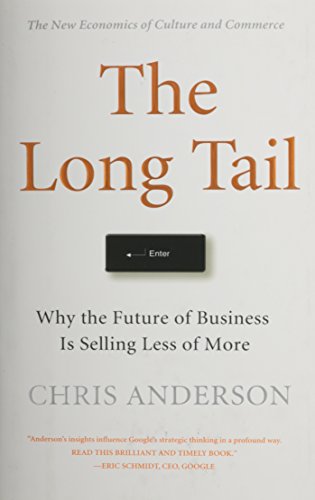What is the Long Tail of Search? Understanding the Principle that Creates Niche Markets

Any would-be marketer who has ever dabbled in the online marketing world – or who has at least acknowledged that they should – most likely has heard some reference to “the long tail,” usually in the context of searches or products. Though people “in the know” refer to the long tail frequently, they rarely offer a definition. This has left many people wondering – just what exactly IS the long tail? Very simply put, the long tail is everything that is not among the big hits or “blockbusters” in a given category. Perhaps you’re wondering how this could be such an essential part of online marketing? Let’s start from the beginning.
The scientific explanation of the long tail
Business people of every stripe have likely heard of the Pareto Principle, also frequently referred to as the 80/20 rule. Essentially, the 80/20 rule states that the top 20% of products will yield 80% of the revenue (or some other severely unequal number). The 80% of products below that magic line is all long tail. The name comes from the fact that, on a graph, that non-hit 80% of products and their resultant revenue looks like a tail attached to the “short head” of super hits.
For added effect -- here's a visual demonstration of the Pareto Principle
What does the Pareto Principle have to do with online marketing?
While the Pareto Principle can be applied to countless things, we’re going to take a look at it in Internet marketing; namely, as it applies to the search engine. Long tail keywords are those that get relatively little traffic, yet also have minimal or non-existent competition for search rankings.
Want a really good, close look at the long tail?

Let's look at an example: Perhaps your business is selling applications or accessories for the Apple iPad touch screen. While the actual key phrase "Apple iPad touch screen" gets millions of hits (as of 2011), it also returns more than 6 million search results. The vast majority of searchers will only look at the first search engine results page, perhaps even a tiny bit further if they haven’t found what they want yet. On a key phrase like this, you can rest assured they’ll find the desired information quickly. This key phrase pits your site’s ranks against some of the world’s largest wholesalers and retailers, and without the kind of traffic or advertising budget they have you’d sink very quickly. Your search link get buried, and your site receives little or no hits from those millions of searchers.
Zero in on your target market with long tail keywords
In contrast, let’s look at the long tail. Let’s say that your product is a custom carrying case for the Apple iPad, and there are tree frogs in the design. Every other Apple iPad retailer may have accessories, but there’s a good chance you’ll be the only one with a tree frog carrying case. We’re going to say that the phrase “Apple iPad tree frog case” receives about 200 searches each month. While those search numbers are nothing compared to the millions searching for the Apple iPad, there are only four retailers other than yourself who carry a tree frog case. Let’s say the item is out of stock on one site, two others have higher prices or less appealing return policies, and the fourth is less user-friendly than yours, and so you get 155 sales from those 200 searches. Even though this term gets a fraction of the searches of a more popular phrase, you ended up getting 155 more sales with this long tail term.
Why should every marketer and website owner pay attention to long tails?
The long tail principle is currently used by some of the internet’s most successful businesses -- eBay, Netflix, and Amazon, just to name a few. The basic idea behind this is that a traditional brick-and-mortar business can’t afford to waste space on less-popular items that could be populated by hits instead, so many simply overlook the “non-hits.” This is where niche markets are created by the thousands; it allows smaller retailers and marketers to eliminate competition from the larger businesses that they generally don’t have a chance against when going head-to-head. That kind of head-to-head competition is eliminated by the use of long tails; you offer something completely different than the sales giants, but they’re products that their customers still want.
- Optimizing Your Website Using Good SEO: Six Search E...
What is SEO? This easy-to-understand SEO how-to points out six essential areas of search engine optimization that you need to know. Before buying an SEO book, start here for learning internet marketing and getting your page ranked today. - Does Embedding Video in a Website Increase Site Traf...
Film strip Wikimedia Commons Video optimization is an often-underused SEO tool that can be effectively used to draw traffic and business to your website. There is no specific reason why it is overlooked, but the important thing to know now is that... - How to Conduct Keyword Research: Basics of Selecting...
Keyword research is the single most effective way to improve search rankings for your online content. It doesn't take long, and can have outstanding long-term optimization results. - Counterintuitive Marketing: Achieving Great Results...
A corporate headquarters building The founders of Copernicus Marketing, Kevin J. Clancy and Peter C. Krieg, tell us that in the never-ending quest for the perfect marketing mix for the next hit product, the... - How to Improve Your Page Ranking with SEO Copywritin...
The importance of search rank cannot be overemphasized in internet marketing. Search rankings is one of the few things that you do not have to pay for on marketing a website unless you choose the pay-per-click...






